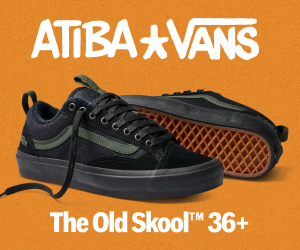Back in 1989, when I was a 16-year-old kid, there was talk amongst skaters of a massive indoor skatepark being built in an old railway shed on Wellington’s Waterloo Quay. The talk was true, and soon after, in late 1989, The Skate Pit opened.
The place was truly Insane! It was the biggest indoor skate park in the Southern Hemisphere at that time. Entering through the door of an old railway car was like entering a portal into another dimension. It cost three bucks for a three-hour session. You would change the dollars you would spend into “Pit” money. Walk past the video game arcade and grab a “Stale Fish” or “Beastie” burger from the burger joint. And their in-house skate shop always had the latest and best gear.
The building was about 1000 ft. long and maybe 60 ft. wide. It had to be that big to house the dream set up within.
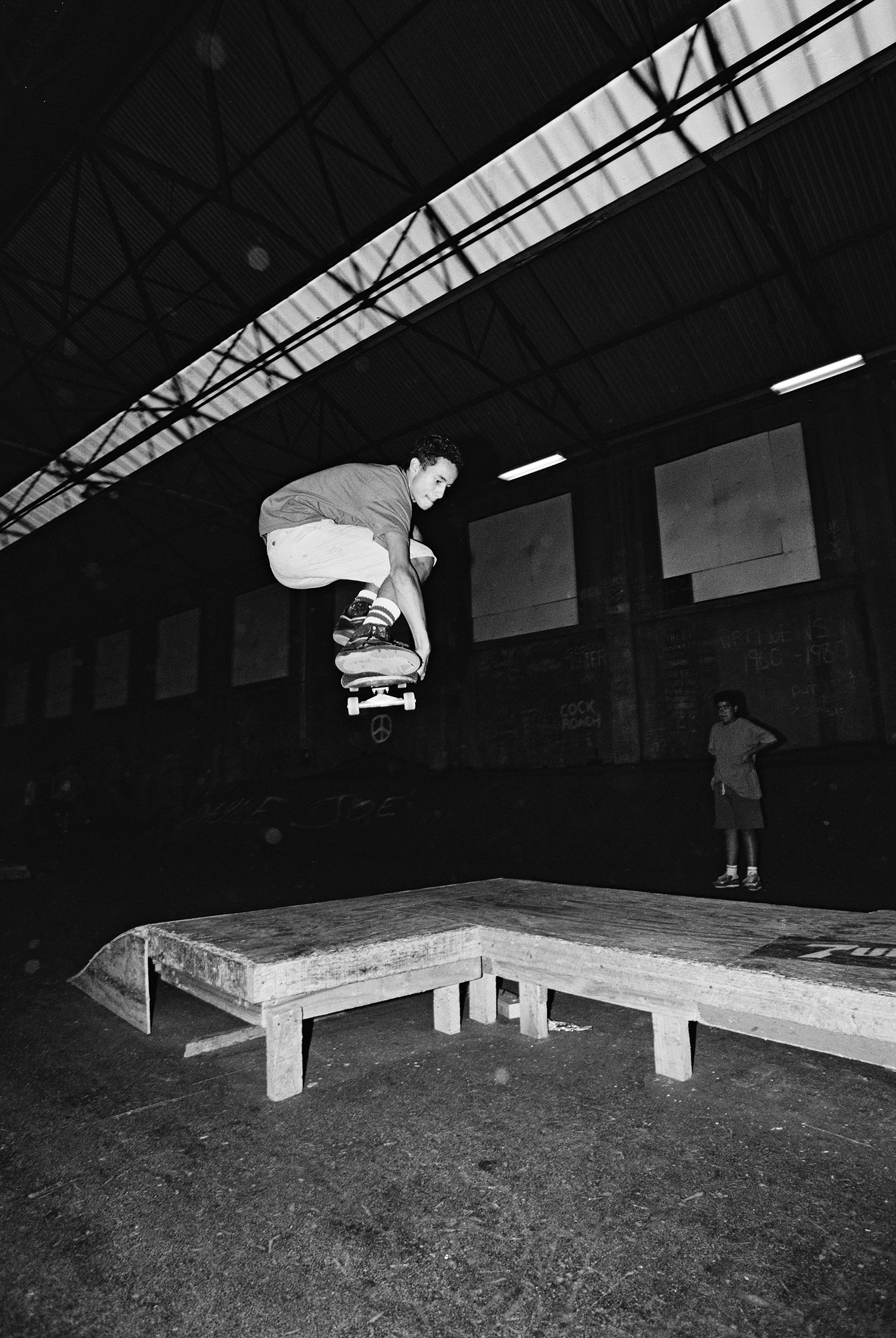
Chey Ataria, ollie mute tweak, circa 1990.
As you moved through the building, there was a 6 ft. high spine ramp that was 16 ft. wide with 8 ft. transitions. There was nothing like it built in New Zealand before. Behind the spine ramp was a vert ramp. It was 10.5 ft. high and 20 ft. wide, which was wide for those times. It had 1 ft. of vert. Oh, the stories I could tell you.
Behind the vert was the 4 ft. high and 16 ft. wide mini ramp. It was so fun and was heavily sessioned all day, every day. Then the gnarliest of the ramps was next. “The Concrete Ramp.” An 8 ft. high, 7.5 ft. transitioned, tight, super fast and scary ramp. It broke quite a few skaters who tried to tame it.
At the end of the building was the street section. This flat section, about 60 ft. squared, housed everything from wallride ramps, a fun box with handrails across and down, jump ramps, 6 ft high hipped quarterpipes, and even another spine ramp. This one was a 12 ft. wide and 2.5 ft. high triple spine that was the learning ramp for most.
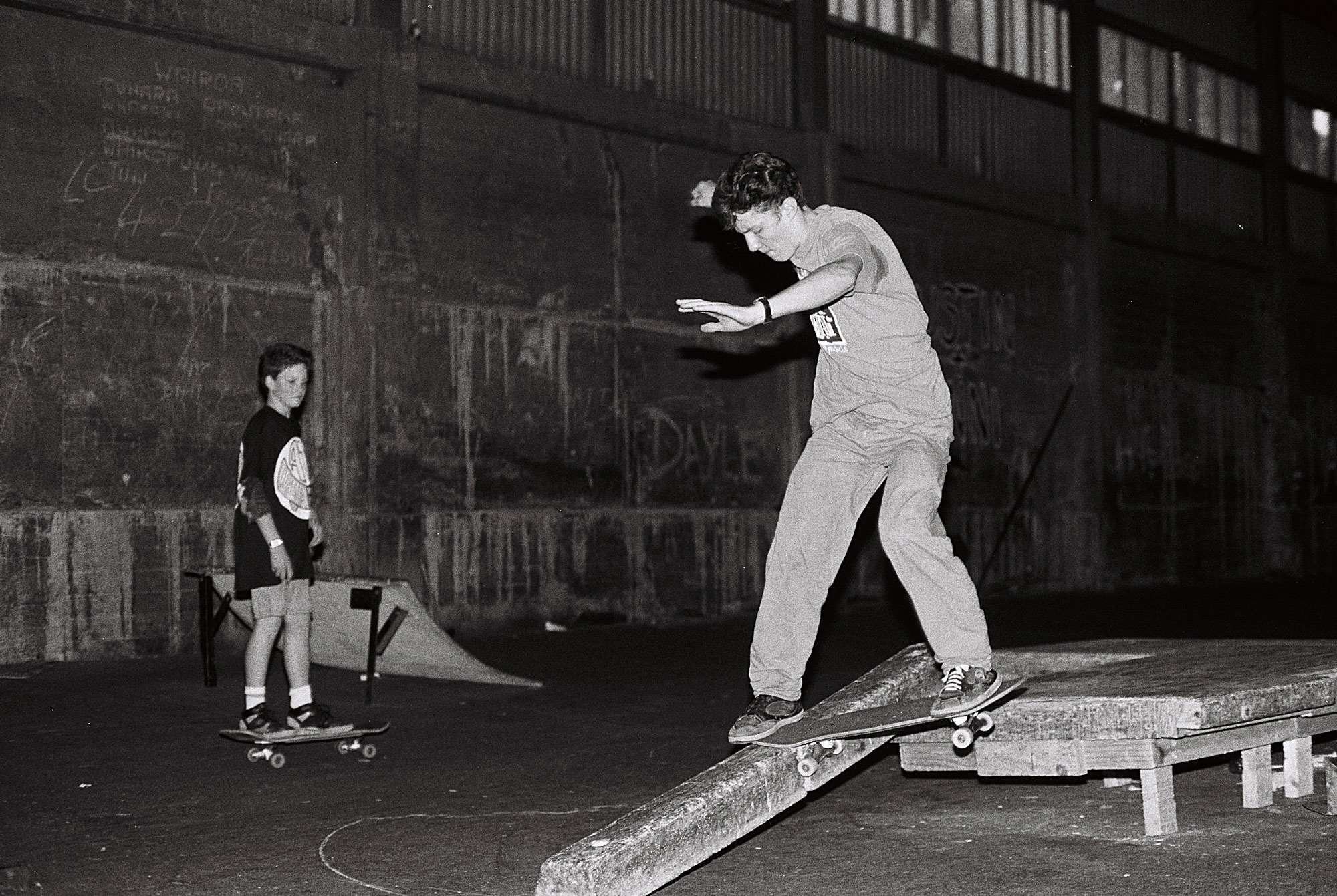
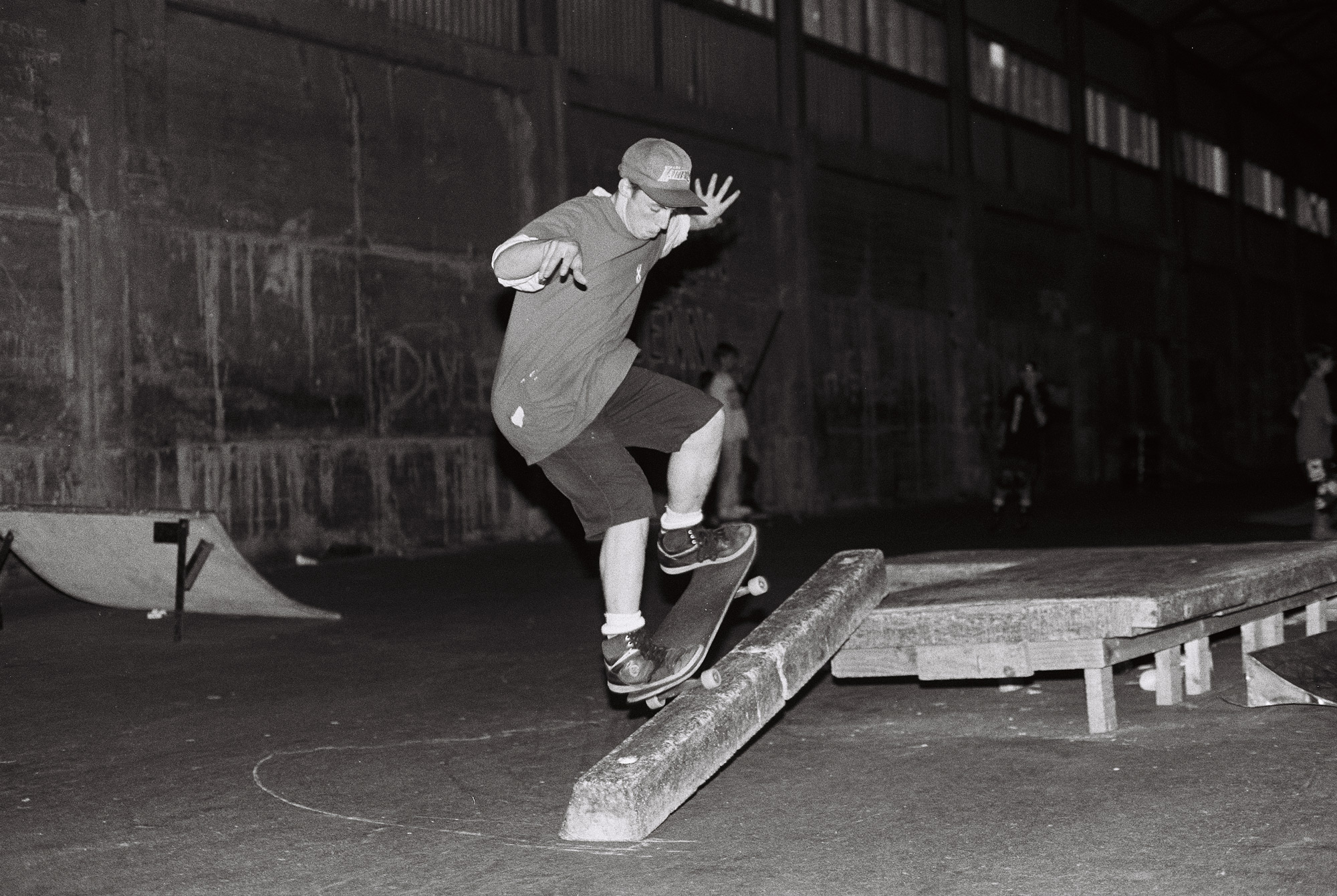
Chris Scott (tailslide) and Ivan Gregoroff (nosegrind), sessioning a concrete parking block, circa 1990.
Then there was “The Wave”, running 2/3 of the length of the building. The tar-sealed snake run — if the snake was straight and didn’t bend — was tucked against the wall. Many a wallride was carved up those walls. Your legs would burn after pumping down that beast, but you still had to roll around the small bowl at the end and pump back to the beginning.
There were pilgrimages of sorts from all parts of New Zealand to skate there. The 1991 Nationals were held at “The Pit”. Demos by top pros would happen every other month. International travellers would skate with us, the locals. The crew would soak it up and get better and better. The best talent in New Zealand — like Morri, Lee and Dave Crabb — would turn up and skate regularly. These guys were our idols and inspiration.
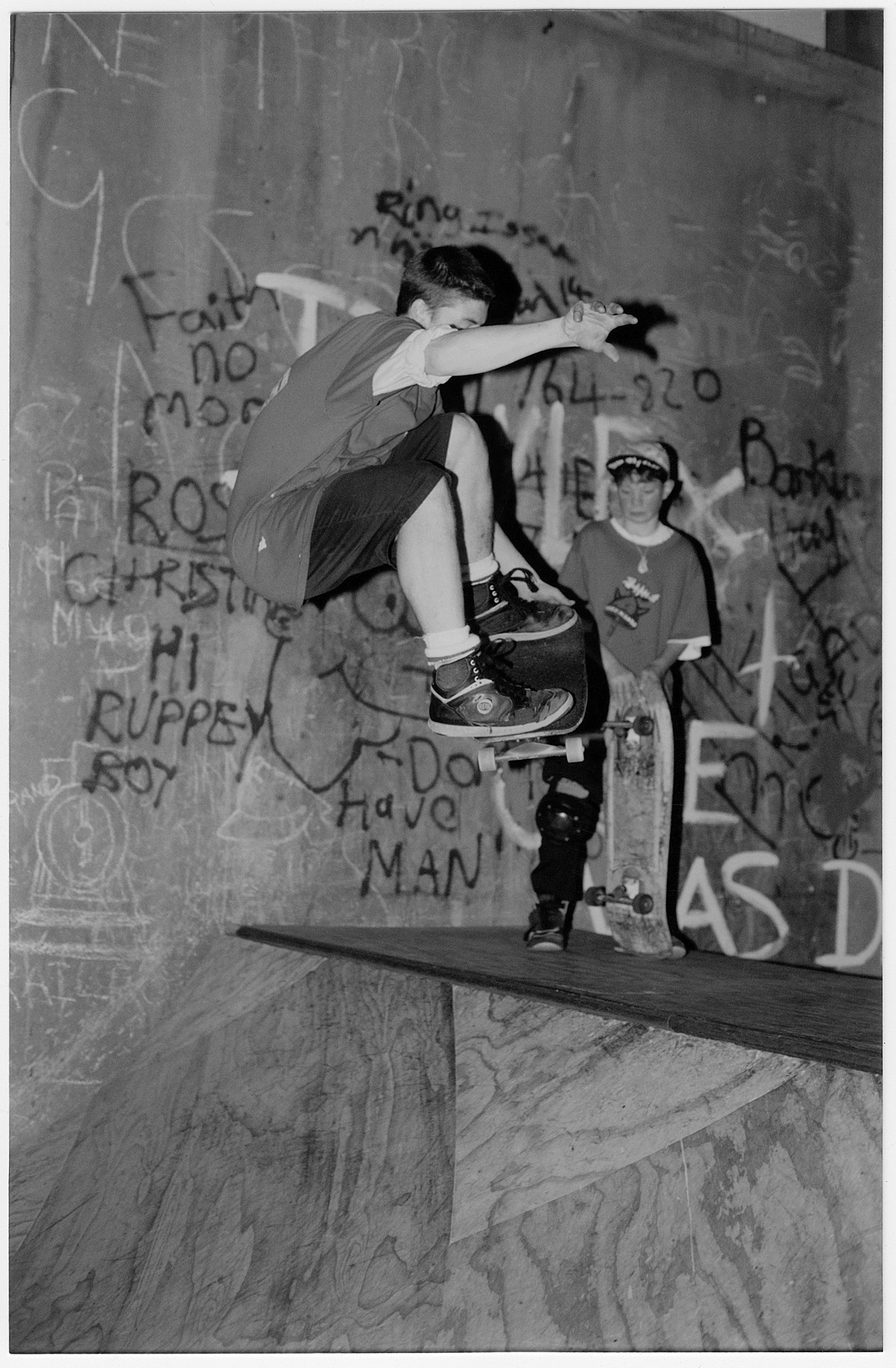
Ivan Gregoroff, frontside ollie tailgrab, circa 1990.
There was a regular Wednesday night jam called “The Expression Session.” It was a crowd-judged comp. Whoever stoked the crowd the most won! And the winner would win their choice of three envelopes. A voucher for a pair of Airwalk shoes was in one of those envelopes. They were considered gold in those days.

Anthony Gregoroff, ollie melon to fakie, circa 1990.
Looking back now, we may not have known how lucky we were. Credit where it is due to Mark MacLeod, Tony Bruce, Johnny “JC” Clapham, and Krystelle Plimmer. Also, to Al “The Builder” for creating a place where young and old skaters could go and be free. And for helping the New Zealand skate scene progress in a way we still may not fully realise today. The Skate Pit churned out some talented skaters, some of whom are still shredding today in their late 40s to early 60s.
The Skate Pit lasted about three years and closed after skating took a downturn in popularity in ‘92. The building was demolished to make way for Wellington’s stadium.
Many lifelong friendships were forged in that building. You can still see the curb cut of the driveway we used to turn into at the entrance to the stadium. It makes me smile thinking about where it used to lead to. If you mention The Skate Pit to skaters of that era, you’ll see their faces light up. The stories are as legendary as it was a life-changing place. It changed mine, that’s for sure.
First published in Manual, Issue 70, April 2023.
Follow Dean Hunt on Instagram @inverted1 and Craig Harris at @craigharrisphotography.
Cover photo by Greg Baker for Dominion Post, 1990.
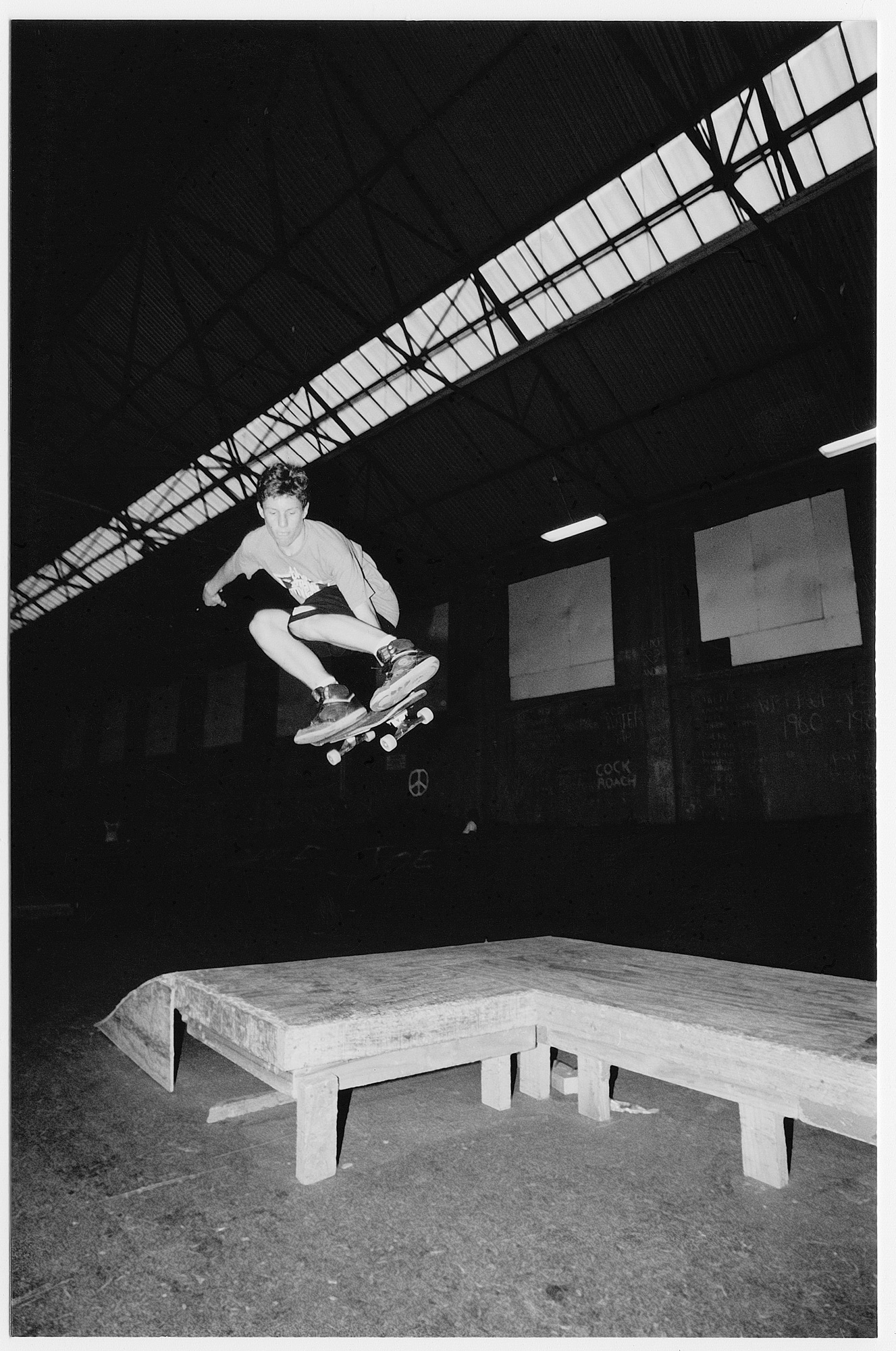
Chris Scott, ollie melon grab, circa 1990.


